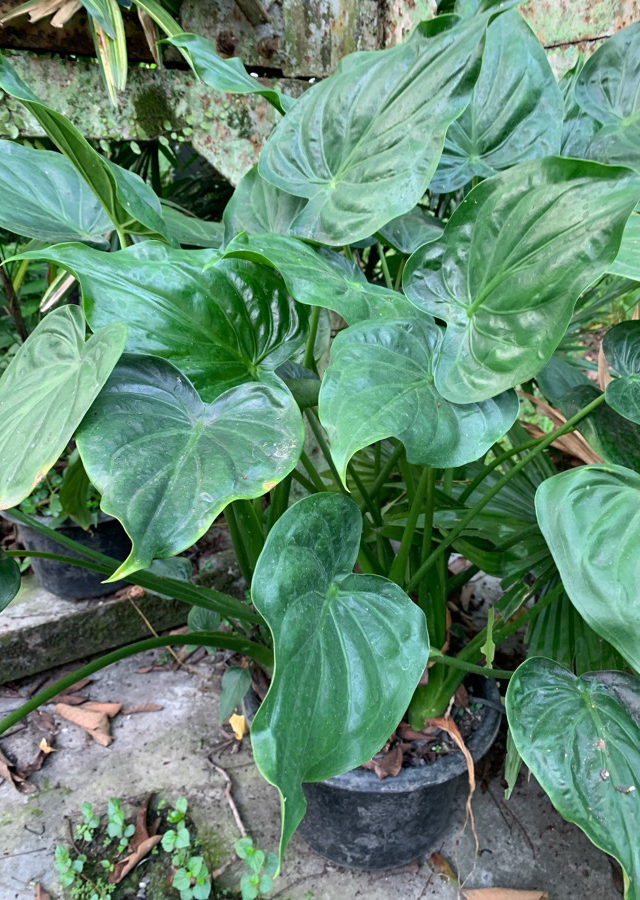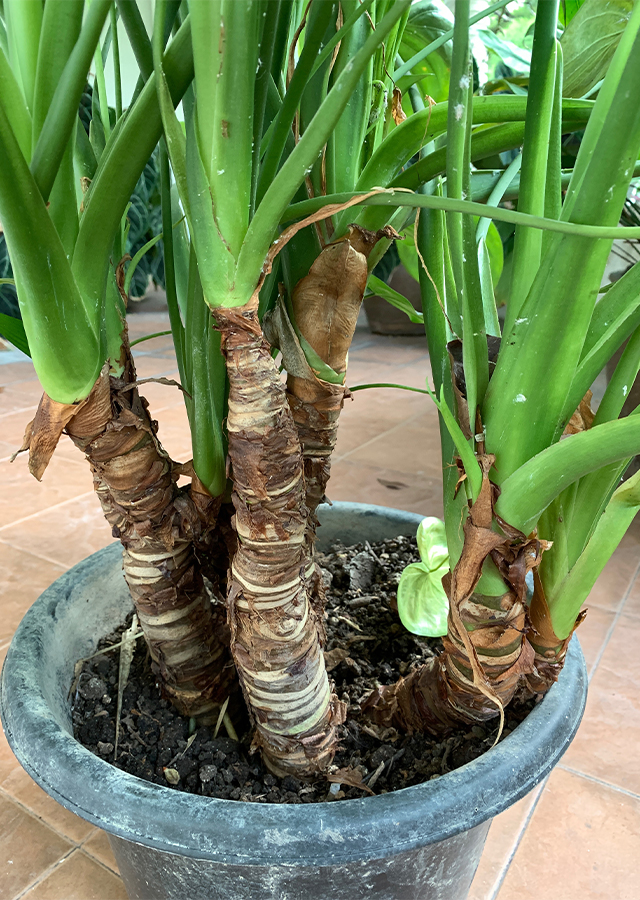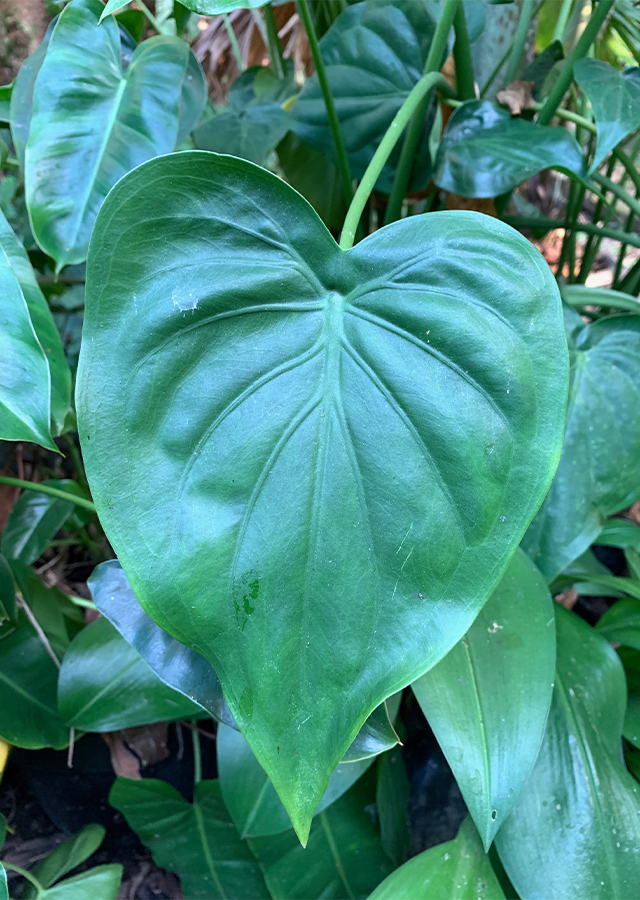Chinese Taro
Alocasia cucullata (Lour.) G.Don
Araceae
Location in our garden
Principal



Synonym
Alocasia rugosa (Desf.) Schott
Arum cucullatum Lour.
Caladium colocasia Schott ex Wight
Habitus
Herbaceous. Herbs, clumping, small to medium sized, moderately vigorous, up to 1m, evergreen.
Part Used
Leaves
Stem
Tuber
Growing Requirements
Need Shade
Habitat
Riverbanks
Grassland
Overview
It is native to Sri Lanka, Himalaya to S. China and Indo-China, only found in association with human disturbance, 0-900 m asl.
Vernacular Names
Jian wei yu (Chinese).
Agroecology
Grows in tropical, sub-tropical/monsoonal climates, semi-shade areas, moist soils or fertile loamy soils and lots of water/moderate water/watersides.
Morphology
- Inflorescences - rarely produced, usually solitary, sometimes paired, among the leaf bases, subtended by membranous cataphylls; peduncle 20–30 cm; spathe 9–15 cm long, green; lower spathe 4–8 × ca 2.5 cm; spathe limb narrowly cymbiform, 5–10 × 3–5 cm; spadix 8–14 cm; pistillate flower zone cylindrical, 1.5–2.5 cm × 7 mm; sterile interstice 2–3 cm × 3 mm. staminate flower zone 34 × 8 mm, yellow; appendix narrowly conical ca 35 × 5 mm, yellowish; fruit rarely produced, a subglobose berry, 6–8 mm diam., ripening red.
- Leaves - many together; petiole weakly D-shaped in cross-section, 25–30(–80) cm; petiolar sheath reaching to ca ½ way, margins membranous; leaf blade broadly ovate-cordate, 10–40 × 7–28 cm, apex acute, base shallowly cordate; primary veins 4 on each side, radiating from petiole, arching; interprimary veins not forming a collecting vein; secondary veins rather obscure.
- Stem - erect, hypogeal, basically many branches.
Cultivation
- Propagated by seed - best sown as soon as it is ripe.
- Germinates best at 24 °C.
- Propagated by division of the rootstock as the plant is coming into growth.
Chemical Constituents
Steroid, iridoid (alocasgenin, tenacigenin, marsdenoside, tenacigenoside), saponins, glycosides, flavonoids, and polyphenols.
Traditional Medicinal Uses
In China all parts are used externally for the treatment of snakebites, boils, rheumatism and arthritis.
Part Used
Reference Sources
- GBIF Backbone Taxonomy. (2021). Alocasia cucullata (Lour.) G.Don. https://doi.org/10.15468/39omei. 2021-10-26.
- Flora and Fauna Web. 2021. Alocasia cucullata 'Moon Valley'. https://www.nparks.gov.sg/florafaunaweb/flora/6/4/6434. 26 October 2021.
- Kaur, A., Kamboj, S.S., Singh, J., Saxena, A.K., Dhuna, V. 2005. Isolation of a novel N-acetyl-D-lactosamine specific lectin from Alocasia cucullata (Schott.). Biotechnol Lett., 27(22):1815-20. doi: 10.1007/s10529-005-3559-y. PMID: 16314976.
- Plant of the World Online. 2021. Alocasia cucullata (Lour.) G.Don. http://plantsoftheworldonline.org/taxon/urn:lsid:ipni.org:names:84151-1. 26 October 2021.
- Ongpoy Jr., R.C. 2017. The medicinal properties of the Alocasia genus: A systematic review. JAASP, 6(1), 25-33.
- Tropical Plants Database, Ken Fern. 2021. Alocasia cucullata. http://tropical.theferns.info/viewtropical.php?id=Alocasia%20cucullata. 2021-10-25.


